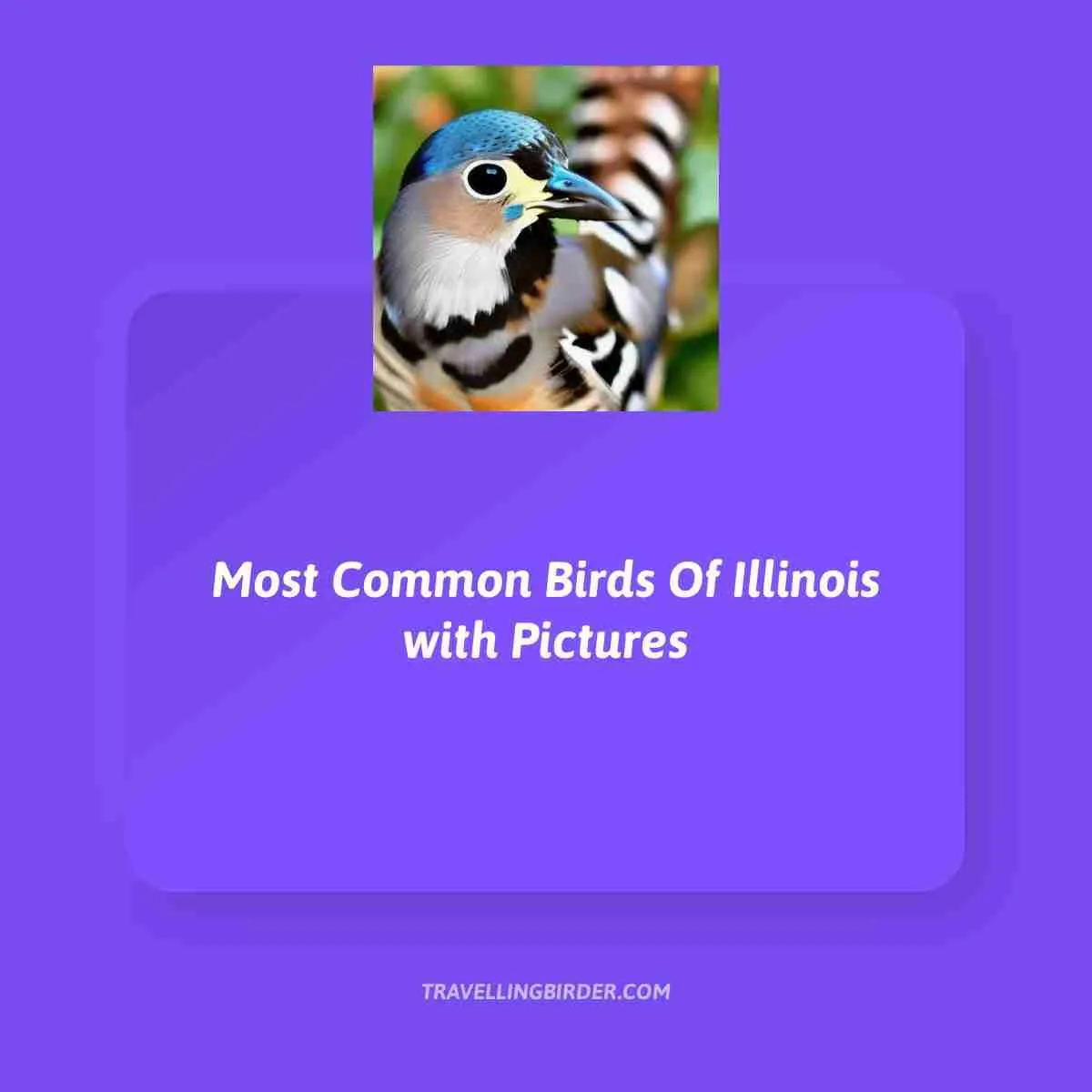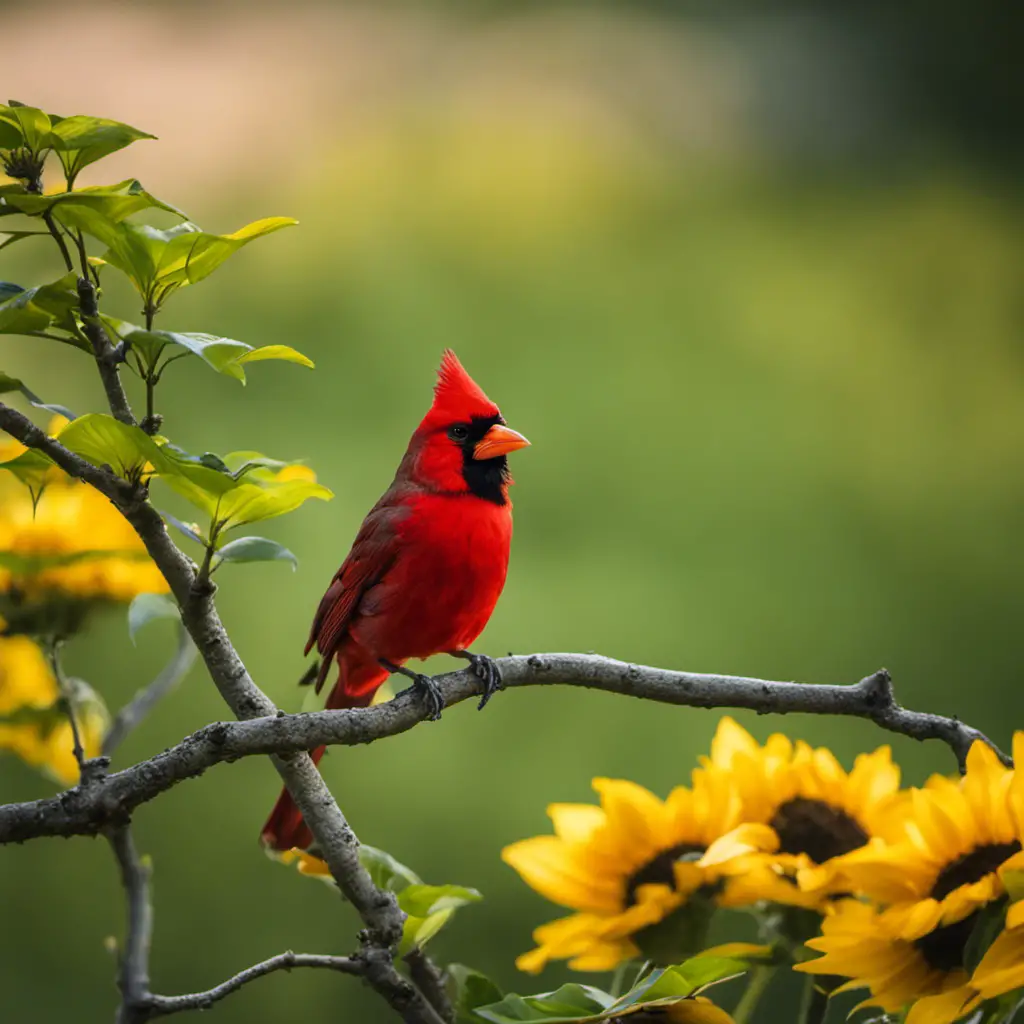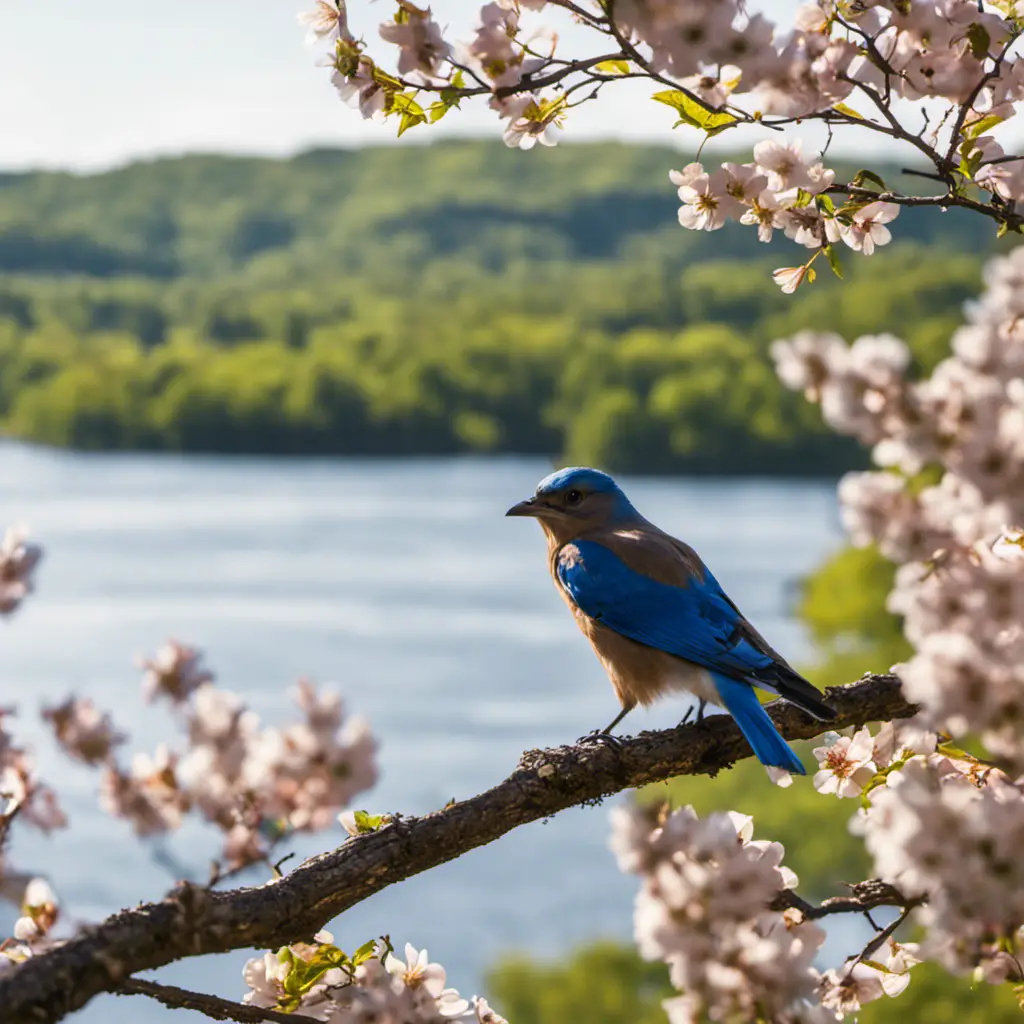We’ll go over the most frequent birds you’re likely to see in Kentucky, with pictures and critical information. Only reliable sources were used, and the data were double-checked by an Ornithologist.
Most Common Backyard Birds of Kentucky:
Song Sparrow
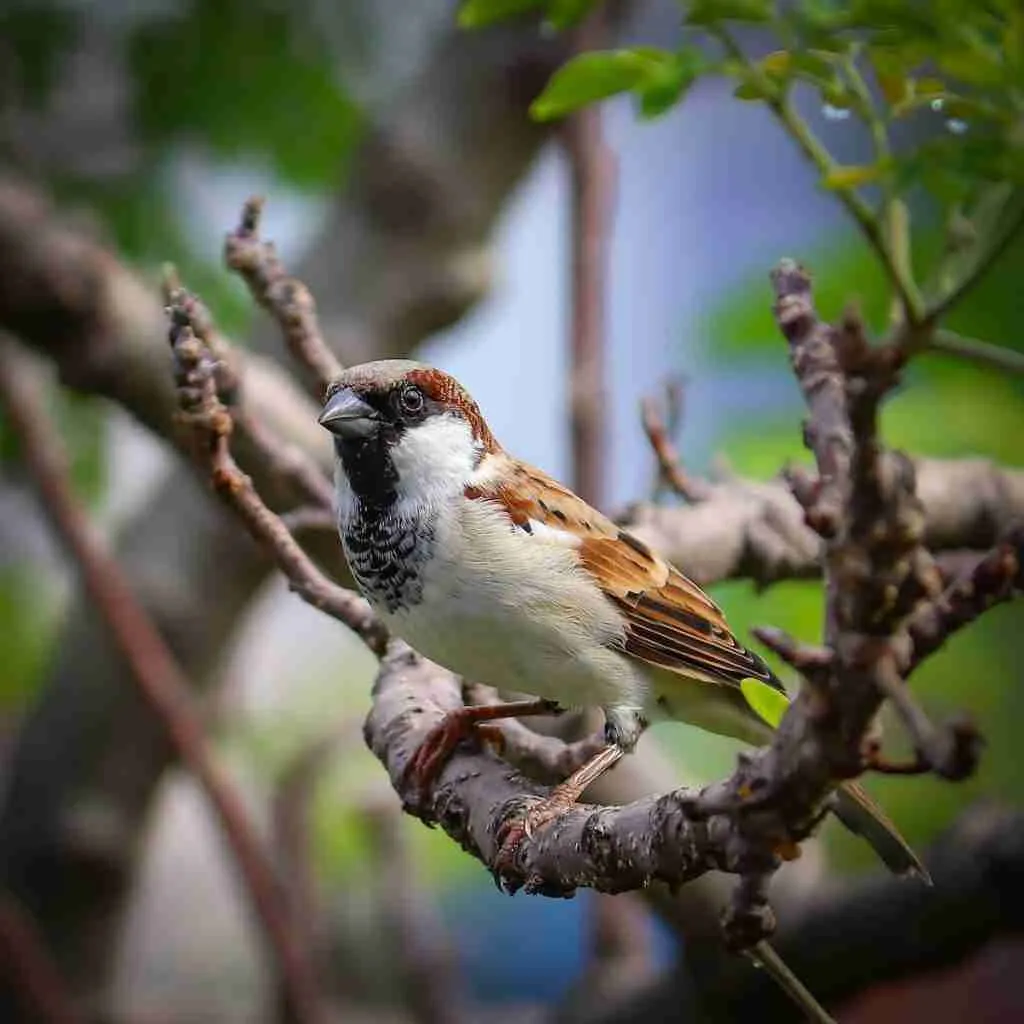
Song Sparrows can be identified by their patterned brown feathers, pale underside, and a signature dark-brown blotch in the center of their breast. These birds usually measure up to 5-6 inches long and are commonly seen near open areas with shrubbery or brushy vegetation like meadows or gardens. In Kentucky they feed on seeds as well as insects.
Song Sparrows are celebrated for their finely tuned singing, with which they both secure a territory and draw in prospective partners. While searching the ground for food, these birds have a tendency to twitch their tail feathers up and down. When mating season begins, male Song Sparrows construct several nests as an attempt at impressing females; she will then choose one of them to incubate her eggs before both parents feed the hatchlings together.
During the cooler months, Song Sparrows typically gather with other sparrow species and can be seen gathering around bird feeders. These birds are very prevalent throughout Kentucky and a large part of North America.

Northern mockingbirds
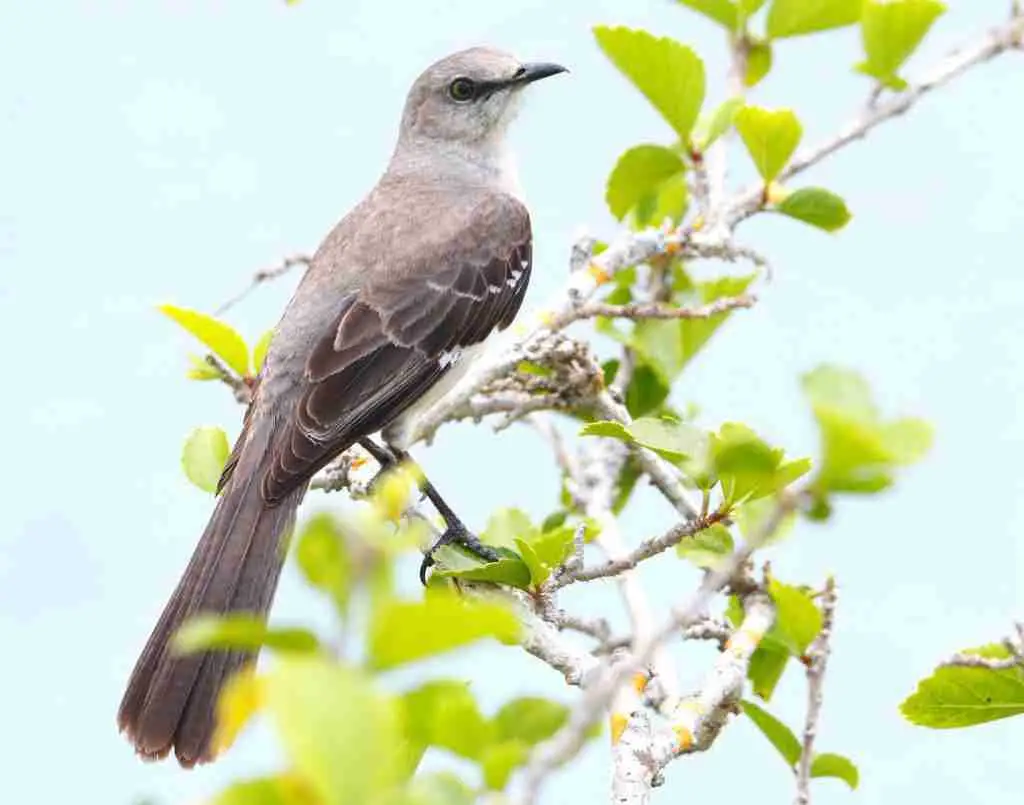
Northern mockingbirds are easily recognized by their distinctive gray upper bodies and white underbellies, as well as their long tails and black wings with white patches. Not to mention, they have a wingspan that stretches from 13-15 inches in length! These birds can be found scavenging through forests, fields and even suburban areas on the hunt for insects, fruits or berries. Northern mockingbirds range in size up to 11 inches – quite impressive!
Famous for their vigorous defense of their territories and stunning singing voices, they have been known to even replicate the melodies of other backyard birds. Kentucky residents can observe these magnificent creatures during spring and summertime.

Northern Cardinal
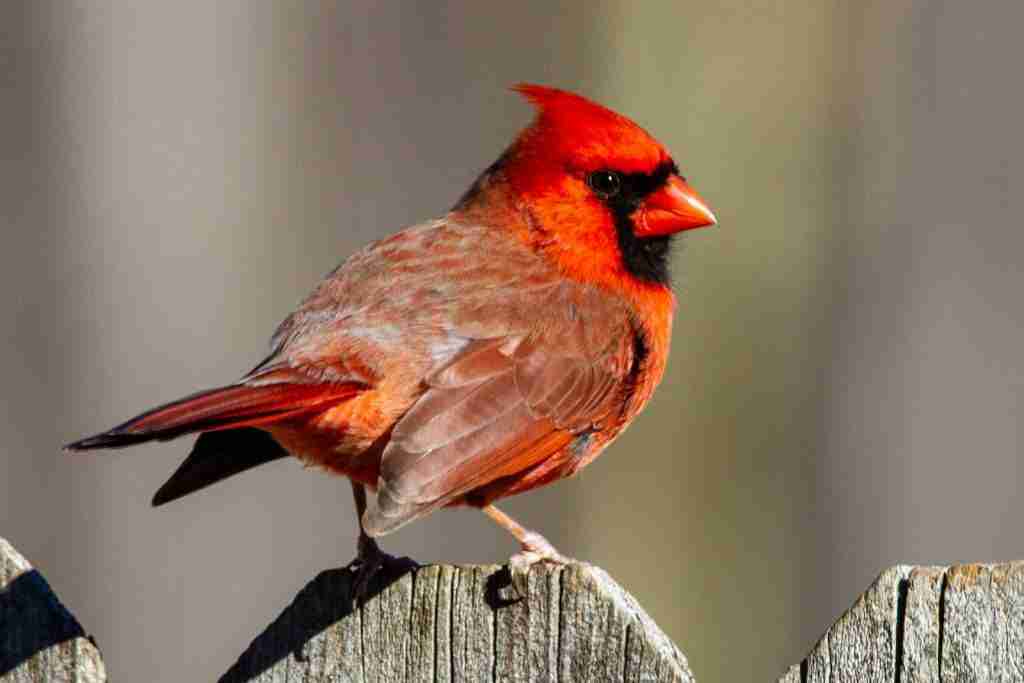
Stunning Northern cardinals are easy to recognize due to their striking red feathering and defined black masks. They primarily consume seeds, fruits, and insects for sustenance. In comparison with females, males are larger in size with a mean body length of 21-23 cm from head to tail and weight between 50-80 grams on average. If you’re in Kentucky looking for these birds, try woodlands along with your backyard shrubbery or wetlands as they tend defend their area rigorously against intruders!
Northern cardinals are enchanting creatures, captivating our attention with their life-long bond and complex social behaviors. The way they feed one another during courtship is a thing of beauty that has endeared them to many in Kentucky. Truly, these birds have become strikingly common features in the landscape of the Bluegrass state.

Carolina Chickadee
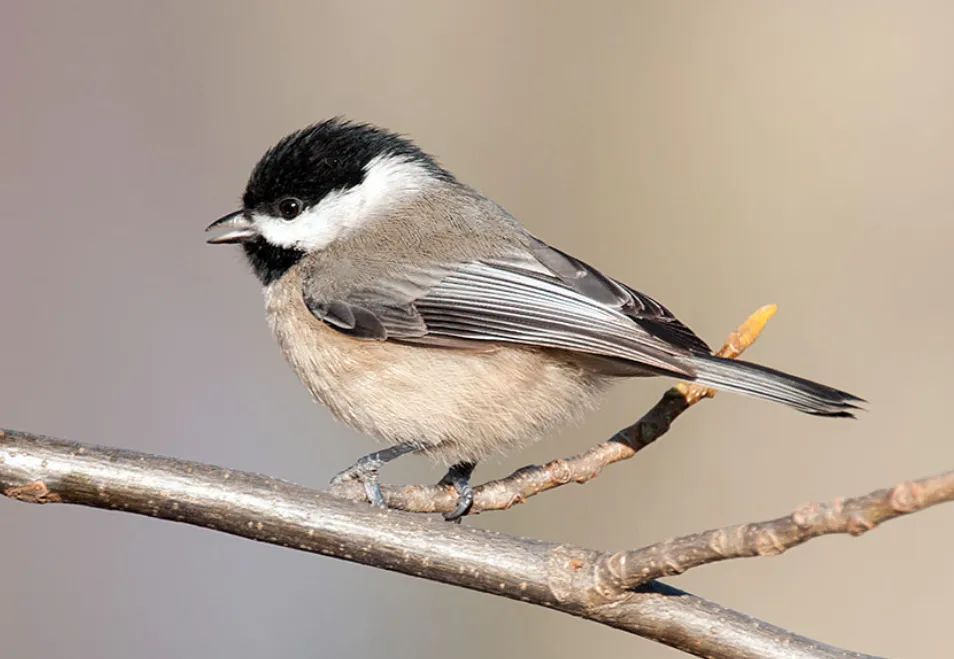
The Carolina Chickadee is a delightful songbird, easily recognizable with its black and white plumage and signature “chick-a-dee-dee” chirp. The small creature typically measures up to 5 inches in length, feeding on an array of insects as well as seeds. You can often find them fluttering around deciduous woodlands or even urban areas that have trees nearby!
These social beings tend to flock together and may be spotted hanging upside down in search of food. Furthermore, these birds are renowned for their smart caching tactics, where they store excess sustenance for later consumption. In Kentucky, Carolina Chickadees can be observed all year round with a slight upsurge during the winter season. All-in-all, they make an exhilarating companion when backyard bird watching!

Red-winged Blackbird
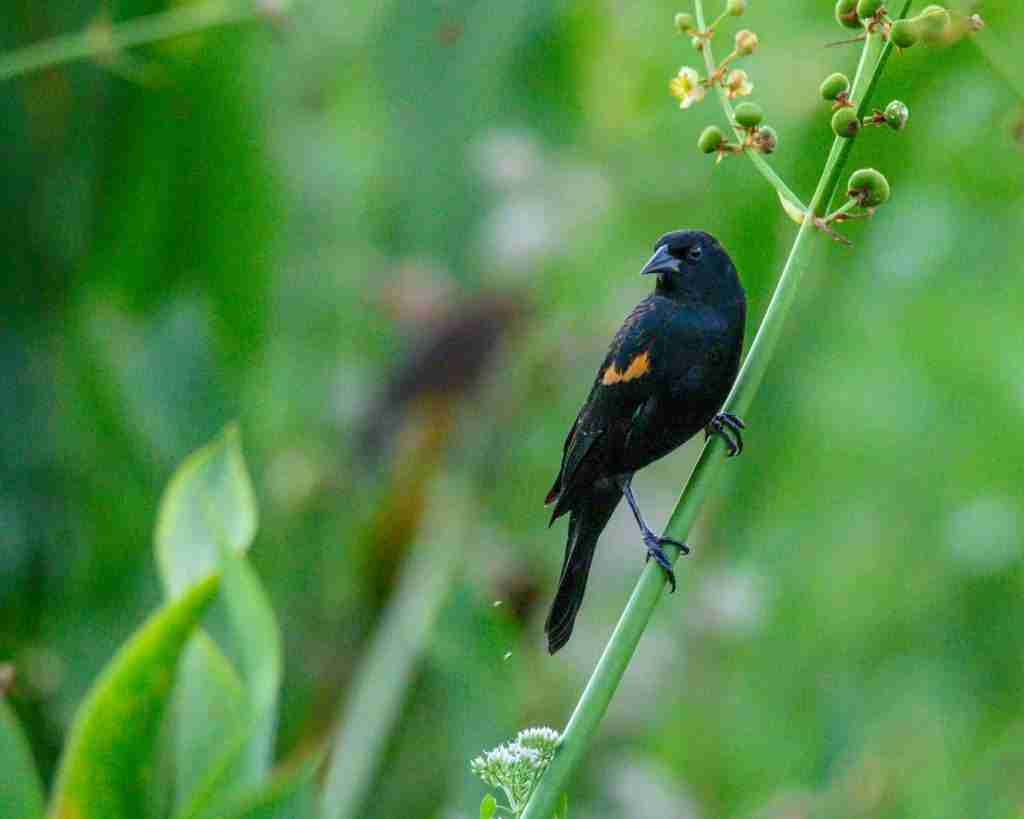
The Red-Winged Blackbird (Agelaius phoeniceus) can easily be spotted with its characteristic black body, red shoulder patch and yellow wing bar. These birds are commonly located in marshy wetlands and grasslands across Kentucky where they feed upon insects along with seeds and grains. Averaging between 7 – 9 inches in size, the red-winged blackbirds are noted for their territorial nature as well as aerial displays during mating season.
During the winter, red-winged blackbirds congregate in large groups with other varieties of birds like grackles and starlings. These feathered friends can often be seen flying across Kentucky’s grasslands and wetlands – a frequent sight in the region!

Barn Swallows

Barn Swallows are easily recognizable with their long, pointed wings, sapphire-colored backs and russet-hued foreheads. Not only do these small birds catch the majority of their food in flight but also scavenge for sustenance on the ground. The average length of a Barn Swallow is 5 to 7 inches and weighs 0.5 ounces or less! In Kentucky, you can observe them near open fields, barns or other manmade structures where they nest by building cup-shaped mud nests along cliffsides or buildings walls.
Making their presence known with loud trills, Barn Swallows form large flocks and can be identified as they elegantly soar through the sky seeking food. Showing off aerial performances during courtship is a common trait of these sociable birds! Additionally, for the summer season, migratory Barn Swallows travel from Central or South America to make their homes in Canada and the United States before winter arrives again. Happily enough, they are not on any list of endangered species at this time.
Unfortunately, the population of these stunning birds is decreasing due to their habitats and nesting sites being destroyed. To stop this growing problem, it’s essential that we protect not only barns used for nesting but also open fields in order to ensure their future survival.

Tufted Titmouse
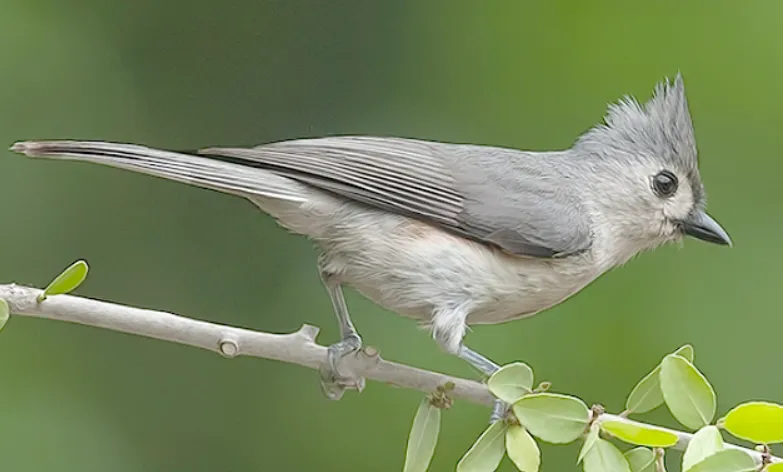
The Tufted Titmouse is the ideal resident for Kentucky’s deciduous woodlands and suburban areas, boasting a small gray body with white underparts, a black forehead and crest pushed up against its short bill. It sustains itself on an insect-based diet supplemented by plentiful sunflower seeds that it searches from tree branches and shrubs throughout the state.
The Tufted Titmouse, a small bird measuring 4.5 to 5.5 inches in length and 0.6 to 0.7 ounces in weight, can be found building its nest with mud or nesting box cavities within its natural habitat; and is often seen congregating in small flocks that can easily be attracted by backyard feeders due it’s distinguishable nasal “peter-peter-petter” call!

House Finch
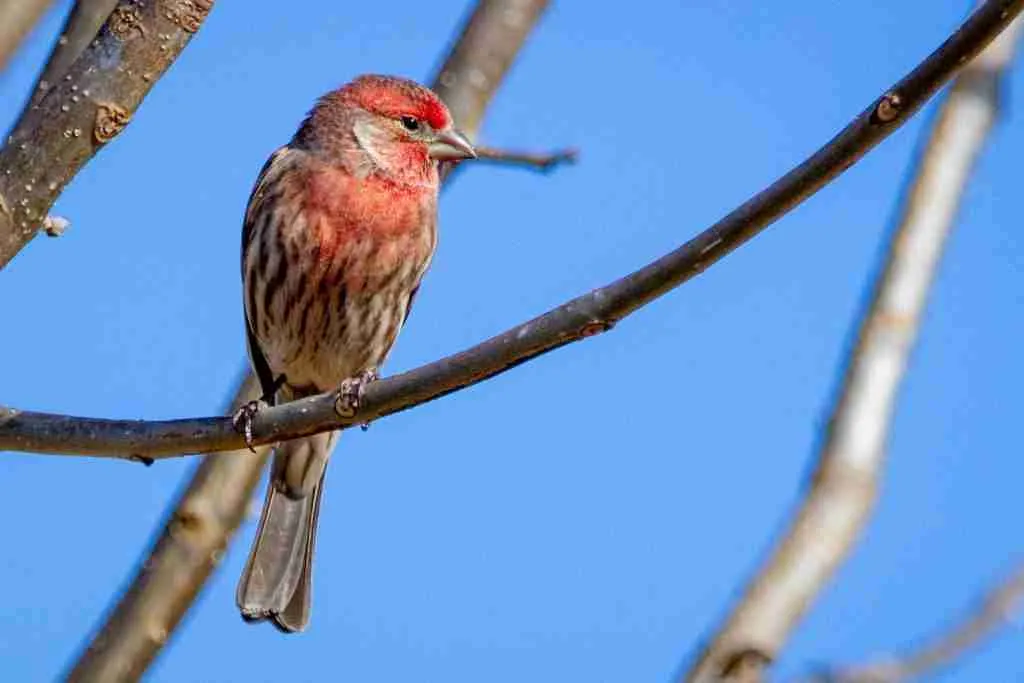
The Red-Headed Finch (Haemorhous mexicanus) is easily recognized by its striking plumage, featuring a red head and chest, brown back, and white streaks on their sides. Commonly found in areas with sparse trees such as suburban yards or parks across Kentucky, the Red-Head Finch primarily consumes seeds and grains but will partake of insects during breeding season. These birds measure approximately 5 to 6 inches in length with an 8 to 11 inch wingspan.
House Finches are highly social birds that prefer to flock together. They often build cup-shaped nests of grasses, twigs, and other plant material in sheltered spots on eaves or tree branches. Moreover, they usually have multiple broods with each containing 3-6 eggs per season; during this time both the male and female will take turns incubating the eggs as well as feeding their chicks.
The House Finch is a vibrant bird that thrives in Kentucky, and it isn’t hard to understand why. They have stunningly deep red feathers and the sweetest chirping melodies, making them perfect guests for any backyard gathering! Their adaptability makes them even more charming – you can find these wonderful creatures everywhere from city streets to rural fields.

American Goldfinch – Small Birds
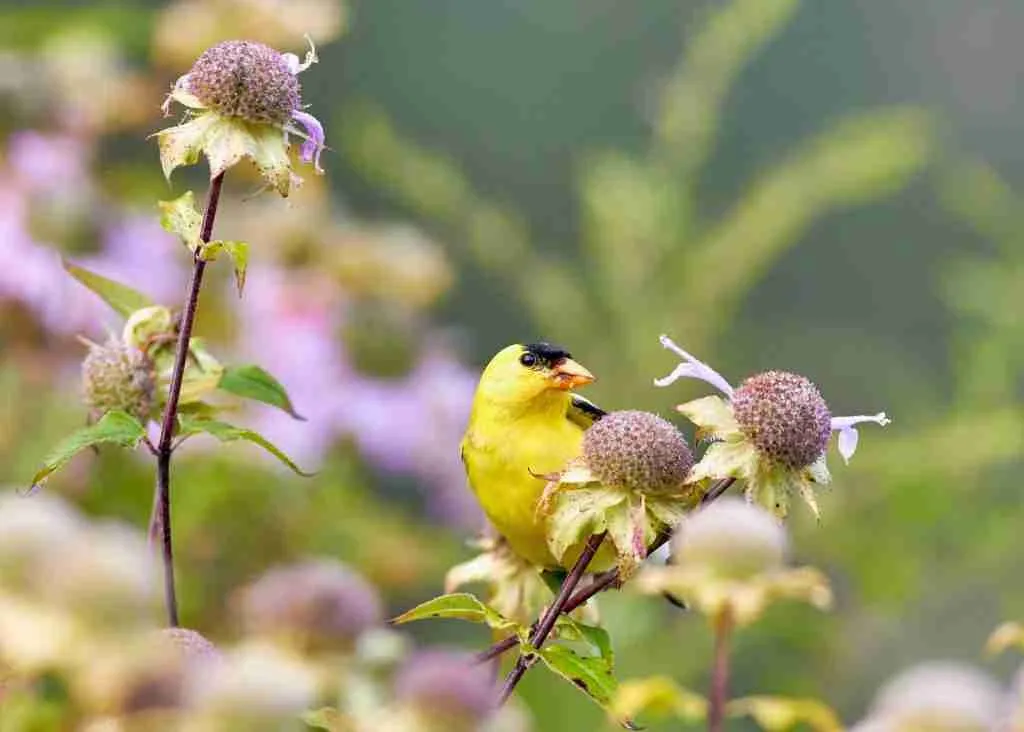
The American Goldfinch, nicknamed the “lightning bird” due to its bright yellow feathers and pitch black wings, is an easily recognizable songbird. They are commonly seen in flocks and feed primarily on black oil sunflower seeds as well as insects. In Kentucky specifically, these birds can be found throughout open woodlands and meadows – often spotted hanging upside down while feasting on thistle seeds!
Male goldfinches seasonally flaunt their brilliantly-colored feathers to allure potential mates, building nests from items like feather and plant fibers. The males and females share in the responsibility of caring for eggs as well as their fledglings. American Goldfinches are a common sight throughout Kentucky, providing an enjoyable experience while observing them in nature’s environment!

Blue Jays
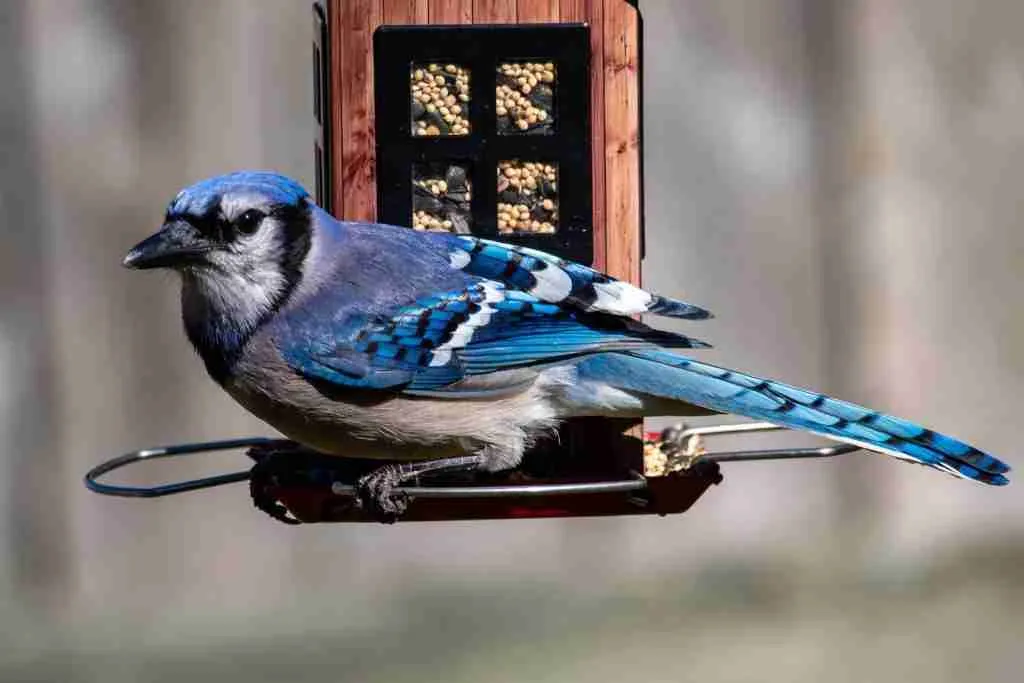
With their vibrant blue feathers and a bright crest adorning their head, Blue Jays are hard to miss! In Kentucky, these birds can often be spotted in woodlands, parks and residential zones. As omnivorous creatures, they feed on an assortment of items like nuts and seeds along with bugs, fruits as well as tiny vertebrates. Generally ranging between 9-12 inches in body length, with wingspan measuring from 13-17 inches; the Blue Jay is truly a sight for sore eyes!
Blue Jays are widely known for their smarts and cleverness. For instance, they have been sighted utilizing various tools to acquire food sources, in addition to mimicking other birds’ calls, as well as collaborating with one another. Furthermore, these vibrant creatures make a unique noise that is used to talk amongst themselves.
Though Blue Jays can be beneficial by feeding on insects or larvae detrimental towards gardens; unfortunately at the same time – fruits and veggies may also fall victim of their bold appetite! Nevertheless, these curious visitors tend to offer an interesting experience when paying your backyard a visit!

American Robin
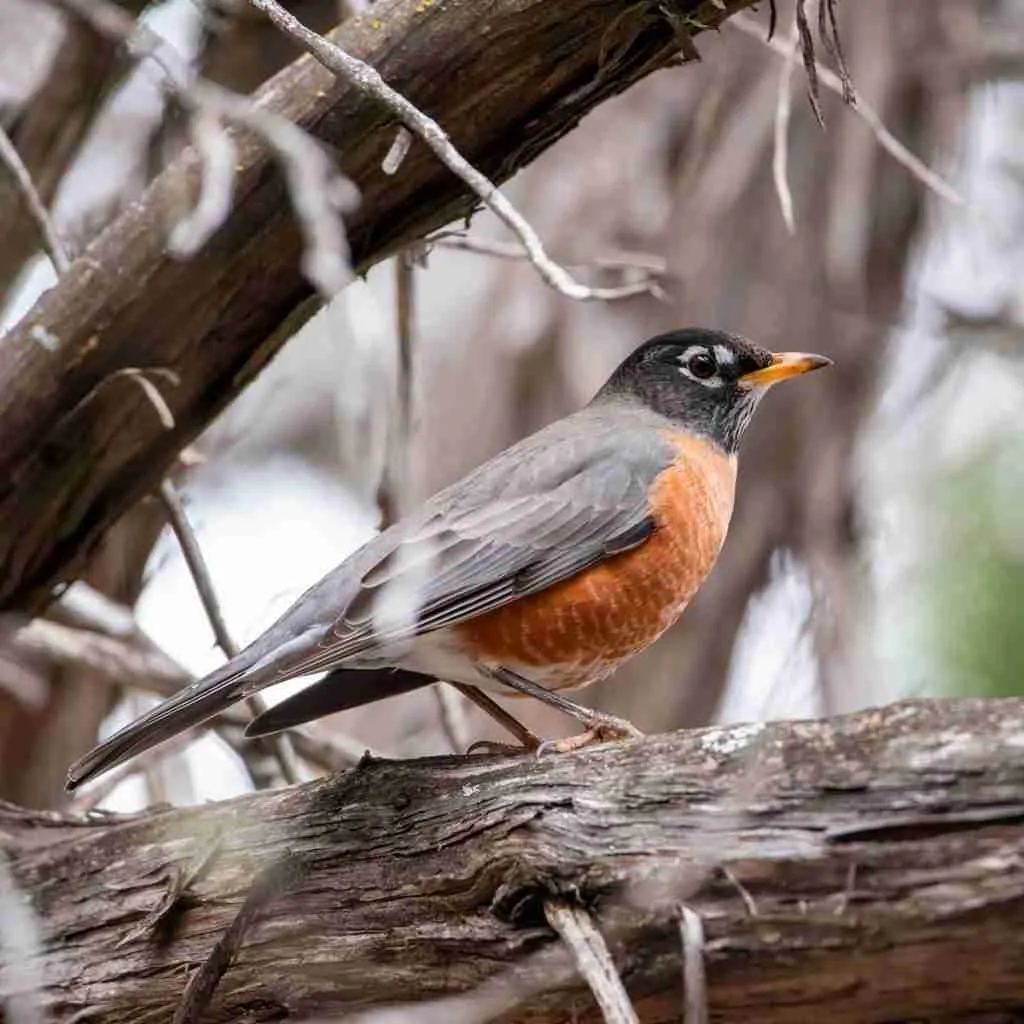
The American Robin (Turdus migratorius) is easily recognizable with its distinctive dark brown upper body, black head and red-orange breast. These birds feed on a wide array of items such as worms, insects and fruit. An average sized robin measures from 9 to 11 inches in length with a wingspread of 12 to 15 inches. Found across multiple habitats including forests, parks and lawns – these creatures are often seen scurrying along the ground foraging food or perched atop tree branches all around us!
The American Robin is renowned for its melodious serenading during springtime, yet can also produce other dissonances to communicate with one another. As monogamous birds, they weave their nests from grasses and twigs high in the trees and will commonly inhabit Kentucky’s territories in warmer months; some may migrate southward while others linger around to form flocks alongside different bird species throughout winter.

Common Grackle
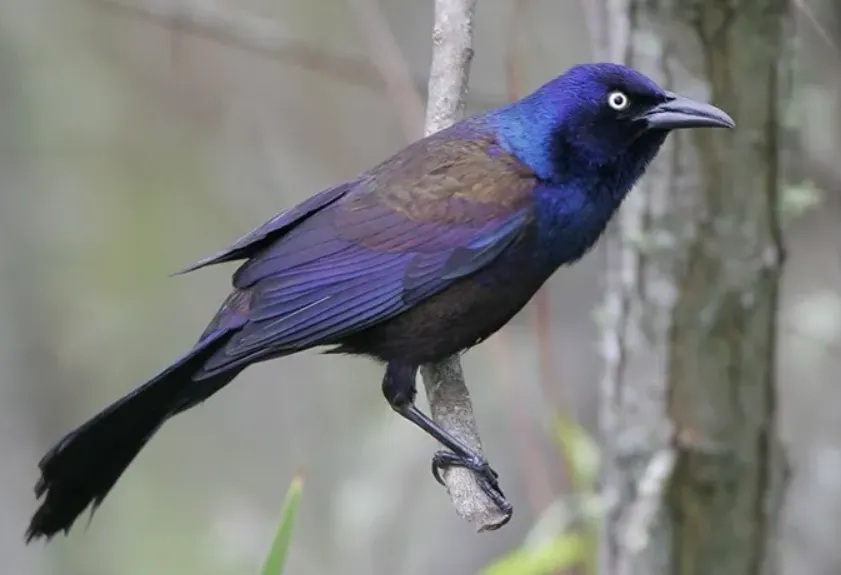
The Common Grackle – otherwise known as the “Great-tailed Grackle” – is a sight to behold with its glossy black feathers, lengthy tail and sharp yellow eyes. These birds mainly feed on insects, seeds and grains while boasting an impressive size of 11-14 inches in length.
In Kentucky specifically, these animals are frequently spotted near open fields or wetlands alongside parks and gardens located in urban areas; they also have a tendency to flock together forming large groups that will no doubt make their presence felt due to their loud yet harsh cries!
Common Grackles have a notorious reputation for being fierce and taking food from other smaller birds. However, they are incredibly adaptive to their environment and abound in the state of Kentucky.

European Starlings
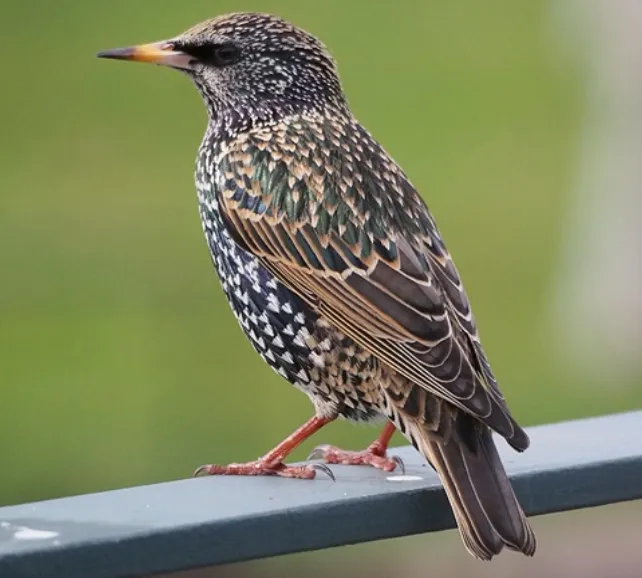
European Starlings, commonly known as Common Starlings, are easily identifiable due to their glossy black feathers and bright yellow beaks. With an impressive wingspan of 15 inches and a body length ranging from 8-9 inches, these birds can devour both insects in addition to fruits, seeds or even scraps from human food sources – making them omnivorous creatures that thrive in different areas like open woodlands and urban zones.
European Starlings have also been noticed congregating with each other in large flocks because they are social animals by nature. No wonder Kentucky is home to so many!
Not only are they renowned for their complex vocalizations and mimicry skills, but these birds can also unfortunately be destructive to crop fields and displace native bird species from where they naturally dwell.

Mourning Dove
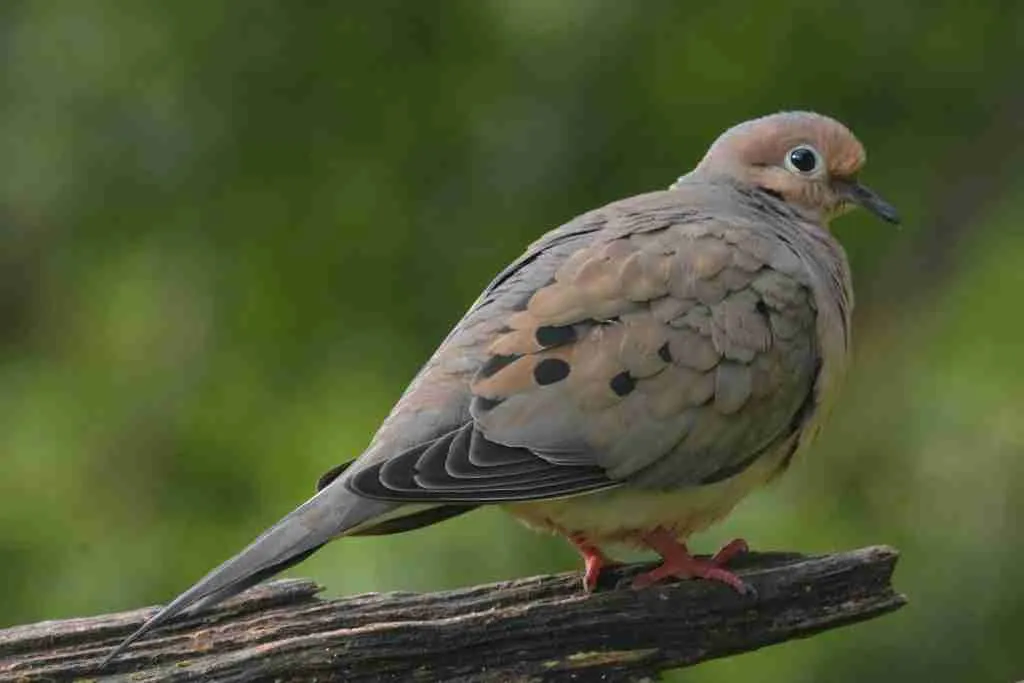
With their gray-brown plumage, black wing spots, long pointed tail and black beak, Zenaida macroura can easily stand out among other birds. They are medium-sized creatures measuring 12 inches in length and weighing 4 ounces on average. In Kentucky you will find them foraging around open fields or woodlands near sources of water as they tend to mostly eat seeds and grains from the ground.
Mourning Doves are known for their social nature and can often be spotted in flocks. They emit a melodic cooing call, as well as an impressive wingspan which enables them to fly up to 55 miles per hour! Their nests consist of sticks and twigs, commonly built within the branches or ledges of trees or buildings. Interestingly enough, they tend to mate for life while raising multiple broods during one single year – each clutch containing two white eggs.

Red-bellied Woodpecker
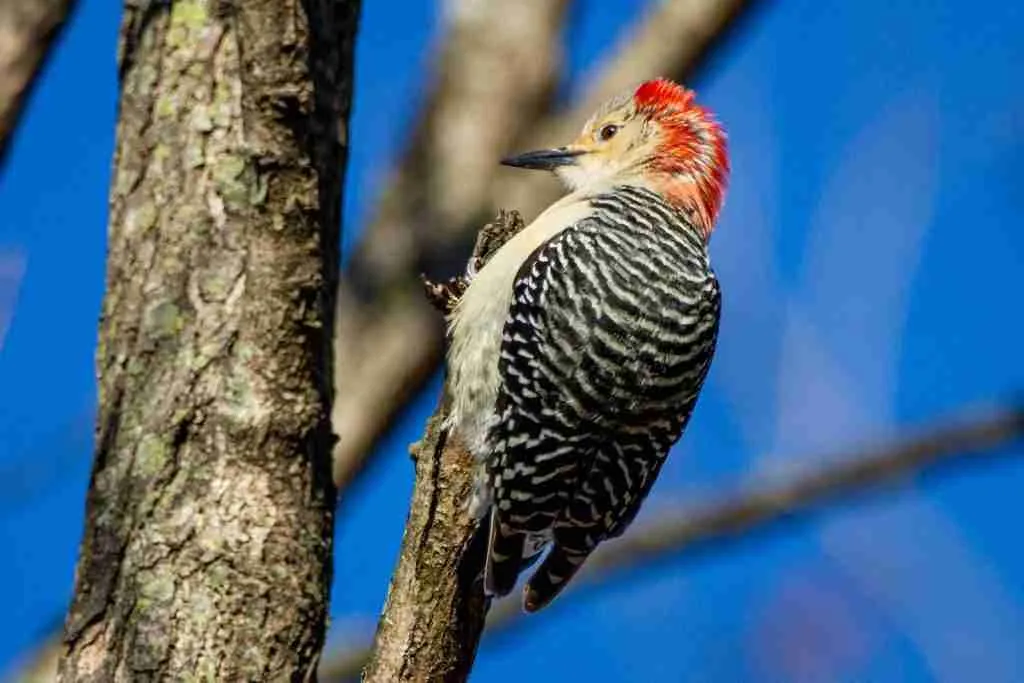
The Red-bellied Woodpecker can be immediately recognized by its signature red belly and wings adorned with white bars. These birds feed on a variety of items, including insects, nuts, and fruits.
Growing to approximately 9-10 inches in size, these woodpeckers favor wooded habitats such as forests or suburban areas where they practice their iconic drumming – used to communicate territory boundaries – before settling into their excavated nests for the night.
If you’re lucky enough to find yourself in Kentucky during any time of year then you won’t have difficulty locating this species; it is particularly abundant mainly along the eastern part of the state!

Downy Woodpecker
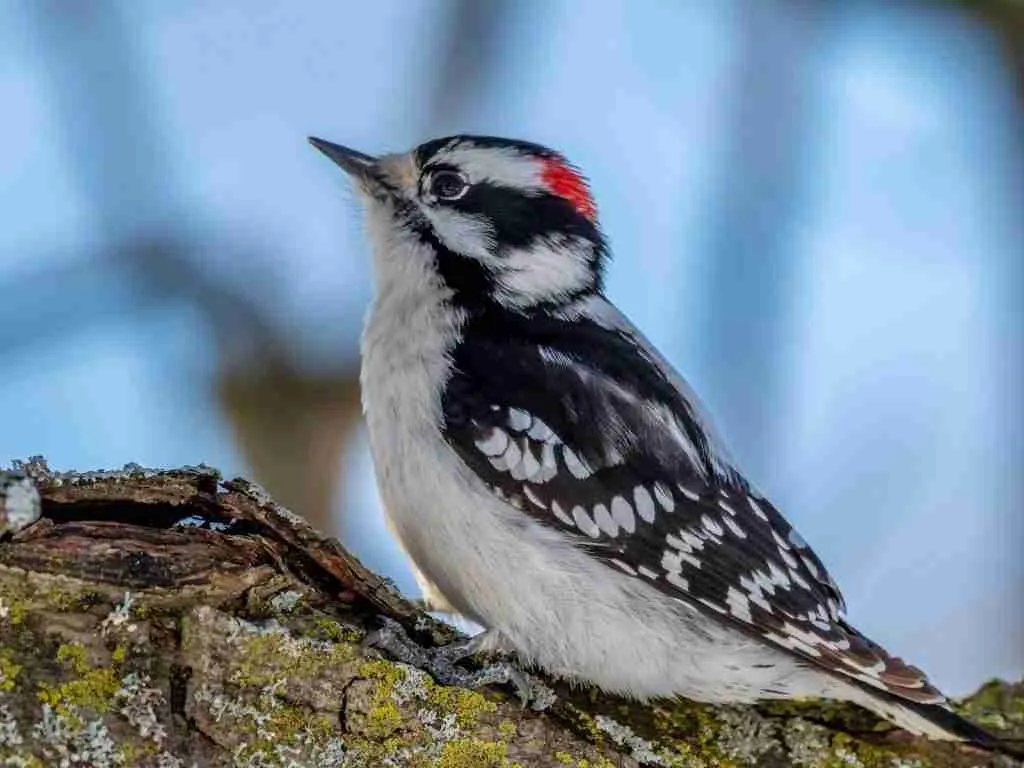
The Downy Woodpecker is an easily-identifiable bird, with its unique spotted pattern of black and white feathers on the back. It has a short bill that’s charcoal in color, plus a pristine white stomach too.
If you travel to Kentucky forests composed of deciduous trees, then this species may cross your path during their hunt for insects, seeds or berries– they can also be found flocking around backyard feeders! Generally speaking, these birds measure six inches long and have wingspans spanning 12 inches wide; so keep an eye out when taking strolls through wooded areas!
With its distinct behavior, the Downy Woodpecker is known for being able to cling vertically onto tree trunks while looking for food and making a loud drumming noise that can be damaging to homes. In addition, they tend form life-long bonds with their mates and build nests either in hollows of dead trees or even nest boxes provided by humans.

Carolina Wren
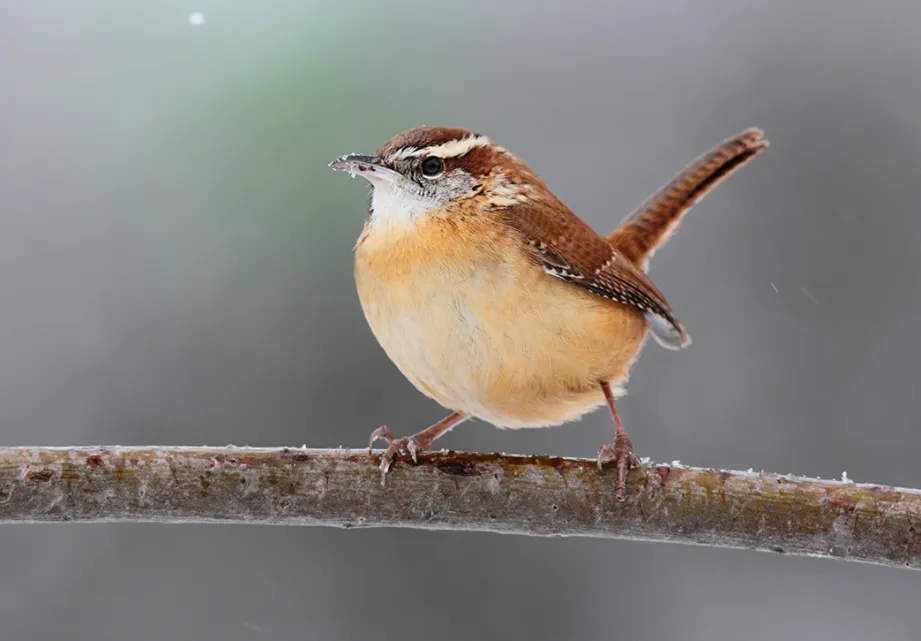
With their distinctive brown and white striped bodies, chestnut-brown heads, long tails that flick constantly — Carolina Wrens are unmistakable! These small birds measure 4-5 inches in length with a wingspan of 7-9 inches. They primarily dine on insects and invertebrates but enjoy the occasional fruit or seed too! Easily spotted in forests, suburbs, city parks… wherever you go – chances are you will spot a Carolina Wren.
Their distinct and boisterous vocals, along with their assertive behavior during mating season, make them known throughout Kentucky. All in all, Carolina Wrens are widespread and can be found everywhere!

American Crow

The American Crow (Corvus brachyrhynchos) is easily identifiable with its entirely black plumage, pointed bill, and unforgettable cawing. They are commonly observed foraging in fields or along roadsides throughout Kentucky but also feast on insects, grains, fruits and even small animals from time to time.
American Crows vary from 17 to 21 inches in size and have a wide range of natural habitats, including open woodlands, farmland, and sprawling cities. These incredibly intelligent creatures form large groups known as “murders,” where they are hailed for their problem-solving aptitude and ingenuity with tools that help them acquire food. They also stand out among birds for their remarkable capacity to mimic human speech!

Indigo Bunting
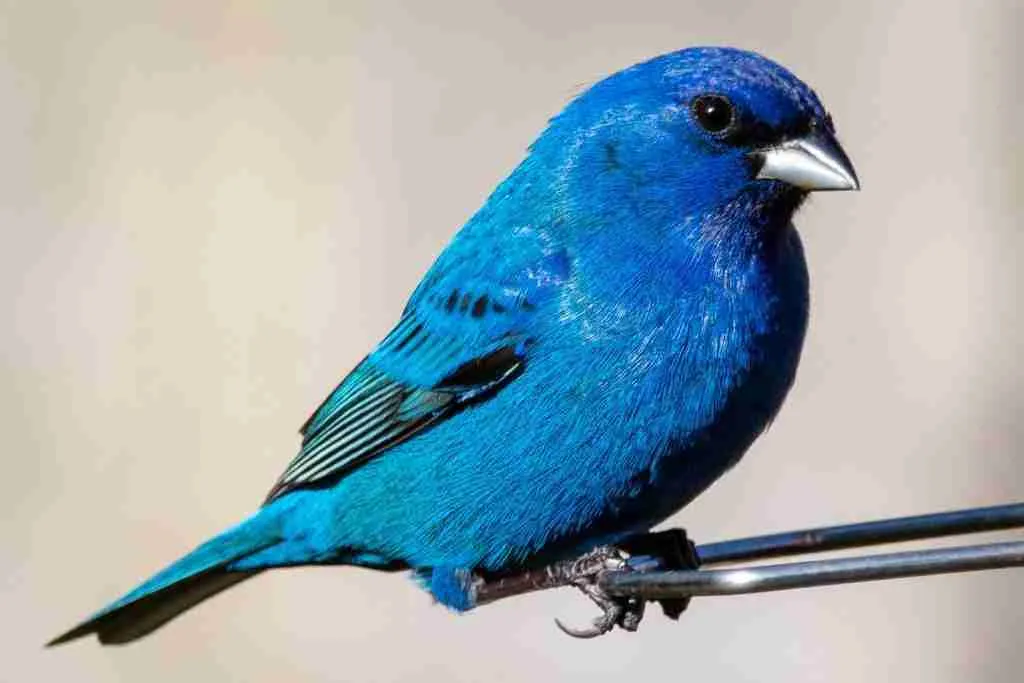
The Indigo Bunting is a small, stunning songbird that stands out with its vivid blue feathers. Its head and throat are jet-black while its belly is white in coloration. It feeds mainly on seeds and various insects found in the wild. In Kentucky, during breeding season, you can locate these birds near open woodlands as well as forest edges; however when migrating or wintering they’re known to frequent fields and residential yards too!
Alone or in tight flocks, these birds have a remarkable presence. Their song is loud and clear as they perch atop trees and soar through the air with astonishing acrobatics. As part of courtship rituals, they dive into dives that mesmerize onlookers before showing off their vibrant feathers for an added display of beauty.
As early as April, certain Indigo Buntings may have established territories for raising their young. Nesting generally happens between the months of May to June and both parents take part in tending to the eggs and nursing them until they grow enough to leave the nest. The female constructs a cup-shaped residence from grasses and other flora so that her family is safe, warm, and secure before hatching begins.

White-breasted Nuthatch
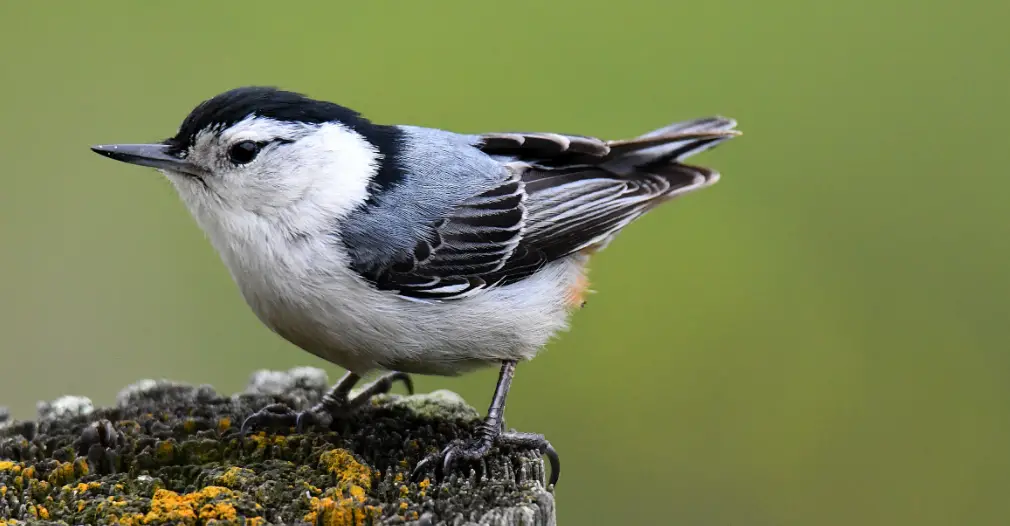
The White-breasted Nuthatch is a tiny, dapper bird with its white face and chest contrasted against the smoky hues of its gray back, crowned by an ebony cap. Its sharply pointed beak allows it to pry open tree bark in pursuit of potential prey hidden beneath.
The White-breasted Nuthatch is a year-round resident in the state of Kentucky and can be found nesting or foraging around deciduous woodlands, residential areas with mature trees, and any tree trunks they may come across. These birds feed on insects but also enjoy indulging in seeds, nuts, and berries! A bit peculiarly enough – these nuthatches have been known to stuff their excess food into the cracks of tree bark so that it could be stored away later.
White-breasted Nuthatches are commonly seen together in pairs or small flocks, and one can easily identify their presence by the sound of their shrill cries. In wintertime, they have a propensity to join mixed species crowds as well and work cooperatively with other feathered creatures searching for sustenance.

Eastern Bluebird
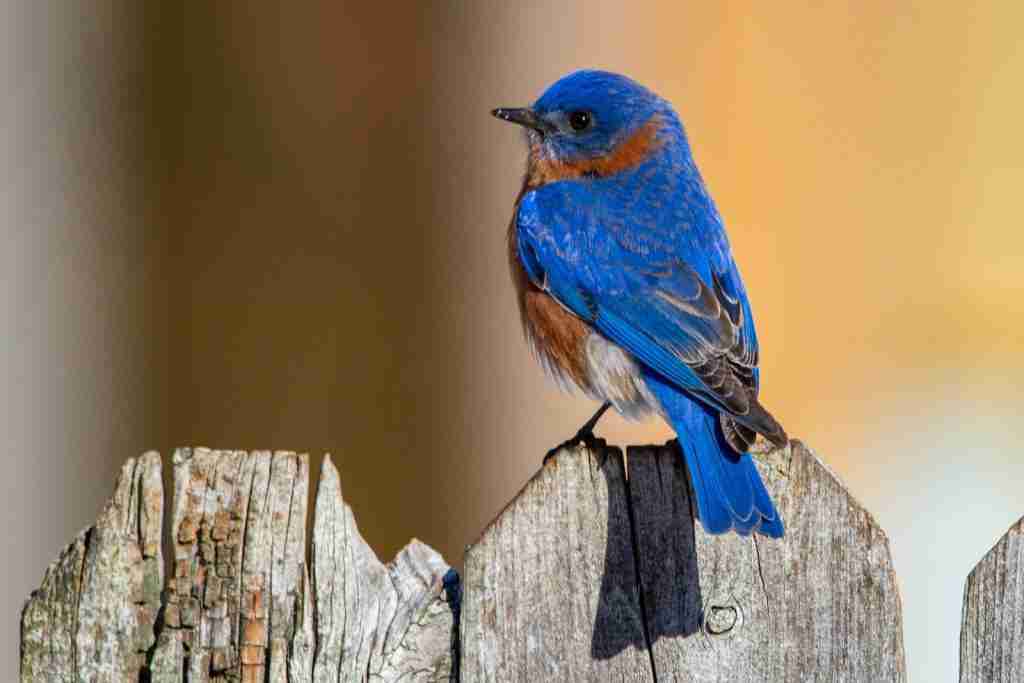
With its brilliant blue upperparts and fiery red-orange underbelly, the Eastern Bluebird is a sight to behold. It typically measures between 6-9 inches in length with an impressive wingspan of 10-12 inches – not that it needs to fly far for sustenance; insects, berries, and fruits make up its diet.
Bluebirds can be spotted in broad woodlands, grasslands, or neighbourhoods with a few trees. During the mating period, these birds are usually observed perched on low fence posts and branches singing to draw potential mates. Their nests can often be found in tree cavities or birdhouses constructed by them. When not breeding season arrives bluebirds congregate with other similarly coloured songbirds and leaf-eating creatures forming small flocks of their own until springtime returns again!
Nevertheless, Eastern Bluebirds will fortify their nesting grounds against other bluebirds and predators during mating season. Kentucky is a common habitat for these birds, which can be easily attracted to bird feeders in your backyard by supplying them with nesting boxes as well. To ensure the prosperity of this exquisite species, we must do our part to safeguard and maintain their natural habitats.

How do I identify a bird in my backyard?
Before you start your bird-watching adventure, make sure that you have a field guide or an app to identify birds. Notice the size and color of your feathered friend as well as its behavior – is it eating seeds on the ground or flying after insects? Don’t forget to listen carefully for any distinctive sounds! By taking note of all these elements, narrowing down potential species becomes much easier. This way, you will be able to confirm its identity with confidence.
What are common birds in Kentucky?
In Kentucky, the skies are alive with beautifully vibrant species of birds. From cardinals and blue jays to American robins, northern flickers, and mourning doves – they can all be seen flying in backyards or perched atop parks throughout the state. Additionally, red-tailed hawks, wild turkeys, barn swallows and goldfinches also grace these parts.
Birdwatchers will delight in the vast array of waterfowl and other avian species that grace Kentucky’s forests and wetlands, such as mallards, Canada geese, great blue herons, warblers, sparrows, and woodpeckers. All these birds can easily be spotted in their natural habitats while exploring this wonderful state.
Are there house finches in Kentucky?
Yes, house finches are ubiquitous in the state of Kentucky. Other popular birds which grace this land include northern cardinals, American goldfinches, mourning doves, and red-winged blackbirds – offering a delightful chorus to residents and visitors alike.
How many kinds of birds are in Kentucky?
With new species continuously emerging and being recorded, it’s hard to provide an exact figure. Nevertheless, some of the most seen birds in Kentucky are cardinals, blue jays, blackbirds, sparrows, robins, crows finches woodpeckers and hummingbirds. Moreover during migration seasons a variety of waterfowl can also be spotted across the state. The state of Kentucky is an integral habitat for a number of endangered or vulnerable bird species, including the cerulean warbler and bald eagle. To ensure their survival, conservation projects are being carried out to keep these majestic birds safe.

An avid ornithologist, zoologist and biologist with an unwavering passion for birds and wild animals.
Dr. Wilson’s journey in ornithology began in childhood and led him to obtain a Ph.D. in Ornithology from the prestigious Avian Research Institute. He has worked closely with renowned experts in the field and conducted extensive research and field studies globally.

